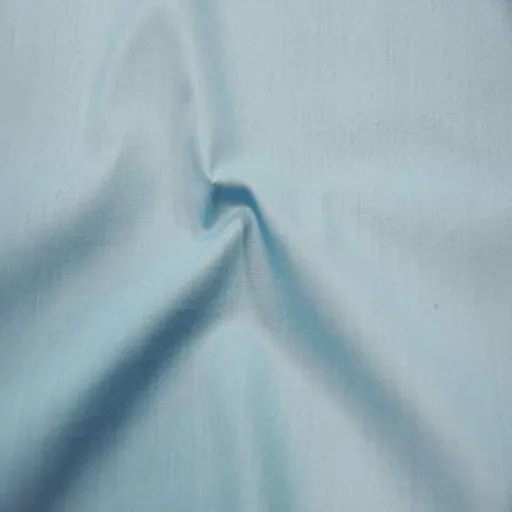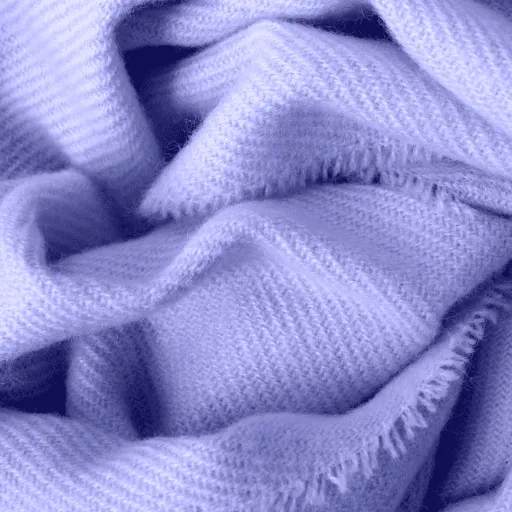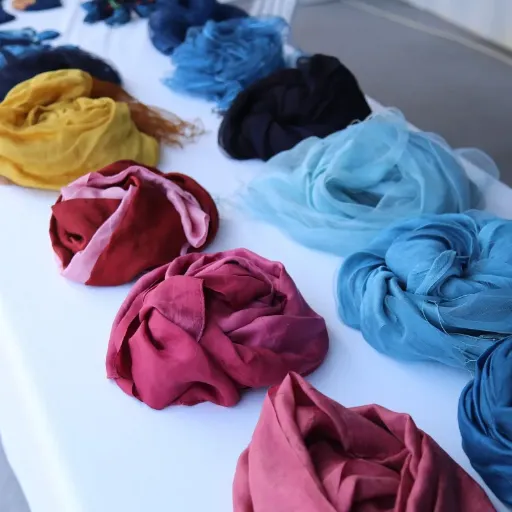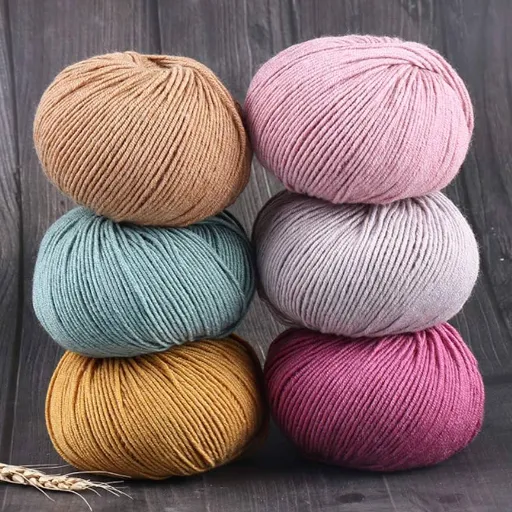Polyester has become one of the most common synthetic fabrics due to its advantageous characteristics, such as strength, flexibility, and easy maintenance. Nevertheless, when dyeing polyester, numerous people face difficulties and thus question its dyeing suitability. If you have ever been caught up in a situation with a pale-not-so-stubborn fabric or colors that seem to fade away, then you are not the only one. This manual will clear up confusion relating to the dyeing of polyester process, it will also demonstrate the reasons why conventional techniques frequently do not work and show the special skills and ways to reach the bright, permanent results. Whether you’re refreshing old garments, creating fabrics for a project, or simply curious about science, this article is your source for information. Continue reading to discover everything you need to know to dye polyester like a professional.
Understanding Polyester Fabric: The Dyeing Challenge Explained

What Makes Polyester Different from Natural Fibers?
Polyester is fundamentally different from natural fibers like cotton, wool, or silk because it is a synthetic material engineered from petrochemicals. Unlike natural fibers, which are made up of organic substances such as cellulose or protein, polyester is composed of long chains of polymers. This structural difference makes polyester highly durable and resistant to wear, but it also presents unique challenges when it comes to dyeing.
One key reason polyester is more challenging to dye is its low absorbency. Natural fibers tend to absorb moisture and dyes easily due to their porous structures, whereas polyester has a smooth, tightly packed molecular composition that resists penetration by water-based dyes. This hydrophobic nature means conventional dyes used for natural fabrics do not bind effectively to polyester. Instead, it requires specific types of dyes, like disperse dyes, which are designed to bond with synthetic materials under high-temperature conditions.
Additionally, the dyeing process for polyester often requires more intensive methods, such as heating to higher temperatures to open up the fiber’s structure. Techniques like heat-setting or pressure-dyeing are commonly used to ensure the dye thoroughly saturates the fabric. This additional complexity highlights why polyester behaves differently from natural fibers during the dyeing process and why specialized techniques and tools are often necessary to achieve vibrant and lasting colors.
The Science of Synthetic Fibers and Dye Absorption
Dye absorption varies remarkably among synthetic fibers, e.g., polyester or nylon, and natural fibers, e.g., cotton or wool. The principal cause is the difference in the chemical structure of the fibers. Natural fibers always have hydrophilic groups that efficiently bond with water-based dyes, while most synthetic fibers are hydrophobic. Therefore, they do not take the water and the usual dyes unless treated chemically or physically.
Thus, they utilize the fibers’ weak points and treat them with synthetic dyes that are simply made to interact with the specific molecular structure of synthetic fibers. One such type of dye is called “disperse” which stands in polyesters because they are non-ionic and their penetration is facilitated through the amplifier applied at the high-temperature nature of the process. The combined heat and pressure open up the fiber even more allowing the dye molecules to invade whereupon a strong durable bond is formed with subsequent cooling.
The outcome of these specialized techniques is a coloring that is both vibrant and water-resistant, thus, it lasts through wear and washing. However, the process requires a higher degree of accuracy and control in comparison to dyeing natural fibers. Hence, the understanding of the interaction between synthetic fibers and dyes is of utmost importance for the manufacture of consistent and high-quality textiles in modern establishments.
Common Misconceptions About Dyeing Polyester
The first and most widely spread misconception is the idea that polyester is incapable of being dyed at all. When it comes to dyeing, polyester does not compare very well to cotton and other plant fibers but it is still a very human-friendly material if proper techniques are employed. The dyeing of polyester normally involves the use of disperse dyes at high temperatures since the synthetic structure of the material does not absorb standard dyes easily. With this process, the color is literally locked in the fiber thus producing a very bright and durable result.
Another wrong notion is the assumption that dyeing polyester is always going to be harmful to nature. Yes, in the past, dyeing did involve an array of chemicals and high temperatures but now there is an alternative dyeing technology which is low-energy dyeing and water-recycling practices which can be classified as eco-friendly. These modern methods, when used in conjunction with sustainable manufacturing, can drastically lower the environmental impact of polyester dyeing.
Lastly, some people think that dyed polyester will always be prone of color fading and bleeding soon. On the contrary, in the case of using high-quality disperse dyes and applying them correctly, polyester can even change its color to a lesser degree after several washes or prolonged exposure to sunlight. A little care, such as washing at recommended temperatures and avoiding harsh detergents can further improve the life span of dyed polyester cossetts.
Essential Toolkit: Gathering Your Supplies for Dyeing Polyester

Selecting the Best Dye for Polyester Fabrics
In dyeing polyester fabrics, disperse dyes are the only ones that can be used. This dye is made to bond very well to synthetic fibers like polyester. Other dyes, unlike disperse dyes, can’t go through polyester’s thick structure at all, but with heat applied, the end result is very vivid and long-lasting colors through solid penetration.
The procedure normally consists of immersing the fabric in a dye bath at very high temperature because polyester yarns need heat to open up and facilitate the bonding of the dye. It is common to take temperatures above 200°F (93°C) to get the ultimate dyeing effect. Controlling the temperature properly and adhering to the dye application instructions are of utmost importance for uniform color distribution and to avoid getting patchy or weak shades.
It is important to scrutinize the dye manufacturer’s specifications thoroughly. Some dyes might come with certain advantages like enhanced lightfastness or washing resistance, which can be considered as extended benefits. Always conduct a dye test on a small piece of the fabric before dyeing the rest, thus making sure that the results meet your expectations.
Necessary Equipment Breakdown
The main equipment which is listed here is plays a very important role in making the dyeing process more consistent and successful. Below you can find the list of the equipment along with a detailed explanation of their purpose and significance in the dyeing procedure:
- Stainless Steel Pot:
A stainless steel pot is a must-have item because it plays the role of a non-reactive container that enables the even heating of the dye bath. Moreover, the chemical reactions that could potentially change the effectiveness or color of the dye are prevented from taking place. A large pot is required to accommodate the fabric so that it can move and thus be uniformly dyed.
- Tongs:
Tongs are indispensable in the handling of fabric that is already in the dye bath. One can use tongs to facilitate the dye absorption of the fabric by rotating and agitating it. Besides, they will keep your hands safe from burns that could be caused by either the hot water or the dye, which is why safety is maintained during the whole process.
- Thermometer:
The right temperature is very important when it comes to both the dyeing process and the fabric quality. A thermometer is needed for the sake of monitoring the dye bath temperature thus ensuring that you are operating within the manufacturer’s recommended heating levels. Overheating is thus avoided, which could otherwise lead to the damage of the more delicate fabrics or the dye absorption that is not proper.
When the right equipment is used, vibrant and durable results are obtained along with the minimization of errors and safety being maintained.
Safety First: Gloves, Ventilation, and Protective Gear
When you are mixing and applying dyes, the first thing to consider is safety and not just your skin, but also your respiratory system and overall health. Wearing gloves all the time is the best way to eliminate the possibility of skin irritation or even chemical burns due to direct contact with the dyes or chemicals used in their process. Disposable or reusable gloves made of materials like nitrile or latex are very often the ones chosen to create a barrier between the dye and your skin. Good-fitting gloves are a must to allow for easy movement and accuracy during the whole dyeing process.
Ventilation of proper quality is of the utmost importance in every dyeing place. A lot of dyes and their fixatives emit fumes that can be quite dangerous if inhaled in large quantities over a long period of time. One way to see that you are not getting too much of it is to work in a very ventilated place where there are open windows, exhaust fans, or an air filtration system in the room. If you are working in a small, tight, or poorly ventilated area, then it would be a good idea to wear a respirator or mask that is designed to filter out chemical fumes, thus protecting your breathing.
To sum up, wearing protective clothing like aprons or old clothes keeps your skin safe from unexpected spills and splashes. Safety goggles are also a must-have because they protect your eyes from getting irritated by chemicals or suffering injury in case of dye splashes. So, if you always apply these protective measures, you will never have a hard time achieving your desired results with your dyeing projects while maintaining a safe and efficient working environment.
Preparing Your Polyester Garment for a Perfect Dye Job

Pre-washing for Removal of Finishes and Sizing
Pre-washing the polyester fabric is the first and most crucial step in the dying process. Polyester textiles often have no more than just a finishing and sizing layer to go along as a finishing touch in their production. These treatments can be the ones that prevent the dye from infiltrating the fabric evenly. If the pre-washing is done correctly, then all these finishes will be removed and thus allowing the whole process of dyeing to be smooth, even and consistent.
Dyeing a garment will be done properly only when it has been washed with warm water and mild detergent. There is a need to apply the detergent that works best in dismantling any oils, dirt, and residues but make sure that the detergent does not contain any bleach or fabric softeners, as these might leave new residues on the fabric. Also, do not put too many clothes in the washing machine, as this may prevent the washing of garments properly. After washing, check the fabric for any stains or spots, as these might interact with the dye and should be removed before proceeding further.
Let the fabric dry after washing, completely. This will enable you to find out if there are any residues or inconsistencies that may need another prewashing. By spending proper time in preparing your polyester garment, you are not only setting a great foundation for a dyeing job with vibrant, even results but also keeping the fabric in great condition throughout the entire process.
Conducting a Fabric Test on a Small, Hidden Area
It is important to make sure that the fabric will not only react but also react properly to the dye. The method of testing by applying dye onto a small, hidden area will let you visualize the garments’ absorption of color and also spot any surprises in reactions. Choose a place that is not visible e.g., an inner seam or the hemline, to do your test.
The test procedure involves placing a little of the dye mixture on the spot selected with the use of a cotton swab or a very small brush. After the dyeing has been done, leave it for a while according to the recommended time and check the fabric if it is already absorbing the color and the result is up to your expectation. Once the recommended time has elapsed, wash the area with cool water and inspect for any irregularities such as patchiness, fading, or unwanted color tones.
In case the test turns out to be negative, you will not have any difficulty going through the entire dye process. If the opposite is the case, think about changing the dye mixture, length of application, or the prep process. With this step, it is guaranteed that your final results will be both vibrant and consistent, and at the same time, the quality and the appearance of the fabric will be less at risk.
Calculating the Correct Dye-to-Fabric Ratio
Correctly calculating the dye-to-fabric ratio is not only a matter of getting the figures right but it is also a more or less guaranteed way of getting the same, if not stylish, results, dyeing. The ratio varies according to fabric, dyeing intensity and dye product. A standard rule of one part dye to sixteen parts fabric by weight (e.g., one-ounce dye for 16 ounces of fabric) is sometimes used as a baseline. Always verify the dye instructions for the accurate measurements that will suit your project.
To get a precise result, start by figuring out the weight of your fabric, preferably with a digital scale for accuracy. Then connect this weight to the dye ratio according to the desired lightness or darkness of the color. If you want lighter shades use less dye, and the opposite is true for deeper, more saturated colors. Provide the right amount of clean water according to the dye’s instructions to guarantee a uniform and strong bond between the dye and the fabric fibers.
Finally, mix the dye very well to prevent uneven color distribution. Do a test on a small fabric swatch before using the entire piece, so that the measured ratio does not produce the undesired shade. If needed, make a change and mark the new ratio down for the future. Right calculations and careful testing will give you professional and long-lasting results with very little guesswork involved.
Step-by-Step Guide: How to Dye Polyester at Home

Creating the Dyebath and Achieving the Right Temperature
For making the dyebath, pour a big pot or basin with a quantity of water sufficient to sink the fabric entirely. Start with warm water, as this helps the dye dissolve more uniformly. Adhere strictly to the dye manufacturer’s instructions and put in the correct dye amount to the water, mixing well to get a very uniform mixture. For polyester, the temperature of the water is the most important factor in the dyeing process, so water temperature is critical.
Polyester, when subjected to the right temperature, can absorb the dye completely. So, little by little, raise the water temperature to approximately 200°F (93°C) since polyester dyes usually start working at this temperature. A thermometer should be employed to trace the temperature during the entire process so that the water remains hot for sure. Do not let the water boil as this may result in a lot of bubbles that could interfere with the dyeing process.
When the dyebath is ready at the correct temperature, dip the fabric in completely and constantly stir to let the dye penetrate evenly. Stirring avoids the formation of streaks or uneven patches. Hold the fabric in the dyebath at the temperature maintained for the time specified (usually around 30–60 minutes). Next, carefully rinse the fabric under warm water and then gradually move to cooler water until the rinse water is clear, thus ensuring that all excess dye has been washed out.
The Dyeing Process: Submersion and Consistent Stirring
Submersion dyeing is a meticulous process that, above all strives to produce good and uniform colors. It is done most effectively by the total soaking of the fabric, which allows the dye solution to penetrate through the entire area alike. The stirring of the dye solution is what moves it around and allows the dye to always be in contact with the fabric, thus preventing uneven or spotty coloring. The quality of the dyeing is also affected by the stirring method used, as constant agitation of the fabric makes the dye absorption by the fibers more efficient, resulting in a rich and uniform color.
Keeping the right temperature throughout the dyeing is very important. Dyes are usually temperature-sensitive and thus their effectiveness, and thus, the outcome is often totally dependent on the temperature at which they were used, which is typically indicated in the dye instructions. By maintaining the dye at this temperature, the dye is allowed to bond with the fabric very quickly, thus producing a very vibrant and lasting color. It is a good idea to use a thermometer to check the water temperature to keep it from varying, which might affect the final result.
When the dyeing time is over, rinsing properly confirms that the process was a success. Rinsing with gradually cooled water is the best method to help the fabric adjust without stressing it unnecessarily, and at the same time, removing any excess dye prevents color bleeding in the future. Always rinse until the water runs clear to guarantee that the fabric has a deep, uniform color and is ready for use or further processing if necessary.
Rinsing, Washing, and Curing Your Newly Colored Item
- Washing Your Colored Fabric:
After rinsing your fabric completely, washing your item will make the color last longer and eliminate any dye residue. It is recommended to use a mild detergent for washing and lukewarm water for the fabric to cleanse it softly and at the same time not to cause any damage. While delicate fabrics can be washed by hand, sturdy ones, on the other hand, can be washed by a gentle cycle in a machine. For the first few washes, it is a good practice to wash dyed items separately to avoid any unintentional color transfer.
- The Curing Process:
Curing is indeed the most critical step in the dyeing process as it solidifies the dye and makes the fabric more durable. This is usually the case for natural fabrics, where the fabric is air-dried completely away from the sunlight, which is the cause of fading. In some dyeing methods, setting the color might require heat, such as low ironing or using a dryer per the dye’s specifications. It sanctifies the dye-fabric union such that the colors remain vibrant with time.
- Final Considerations for Longevity:
The curing, conceal your newly dyed piece from the light and moisture that can be excessive to keep it colorful. When washing fabrics moving forward, always use gentle methods similar to those that were used during curing and avoid strong bleaches or detergents that can strip the dye. Sticking to these steps will not only help in maintaining the brightness of your fabric but also increase its total lifespan of it, thereby making your effort and creativity last longer.
Aftercare and Troubleshooting for Your Dyed Polyester

Proper Washing Techniques to Prevent Fading
Preventing the fading of the dye in your polyester blends should always start with washing them in cold water. Cold water essentially reduces the chance of the dye bleeding or getting weaker, thus making the colors last longer. Use a poor washing cycle along with a gentle detergent that is safe for the fabric and does not contain any harsh chemicals as this will keep both the dye and the fabric in good condition.
Do not use bleach or fabric softeners because they will leach the color out of the polyester fibers. Instead, choose either vinegar or baking soda which are natural alternatives to keep the fabric fresh and odorless. Washing the fabric inside out can also provide an extra layer of protection against abrasion which can cause fading.
Lastly, air-drying dyed polyester is the best way to avoid the heat damage the washing machine may cause. If you have to use a dryer, set it on the lowest temperature possible. Caring for your dyed polyester with the above methods will ensure that your fabric will be bright and strong for a longer period.
How to Fix Common Issues like Splotches or Uneven Color
If you see splotches or uneven color in your dyed polyester fabric, it may be due to a lack of proper preparation, improper dying or retention of color in some parts that depend on the fabric itself. However, the good news is that you can still take some measures to improve the situation up to the point of getting a more uniform look.
- Rewash the Fabric: The first step is to rewash the polyester fabric in warm water while using a gentle detergent as well. Sometimes the residual dirt, oil, or chemicals from previous washings can make the absorption of color uneven. A thorough wash can help reset the fabric and remove any interfering substances.
- Spot Treatments for Splotches: In the case of spotting or staining with dye, use a color-removing agent like Rit Color Remover, which is a good option. Prepare the solution as per the given instructions and then apply it directly on the affected area or immerse the whole garment into the solution. This is most effective when the problem is recognized early, as it is more difficult to correct older stains.
- Redye the Fabric: In some cases, redyeing is the only solution for severe unevenness. First, check that the polyester is well prepped by washing it and dyeing it at the same temperature throughout the process. The perfect dyeing temp for polyester is about 200–212°F (93–100°C).
- Stir Continuously During Dyeing: Bad dyeing is very often due to a lack of agitation in the dye bath. Mix the fabric well and keep it constantly in motion to make sure that all parts of the fabric get equal exposure to the dye solution. This will help to eliminate uneven absorption and reduce streaks or patches.
- Test Your Water Quality: Hard water may lead to an inconsistent binding of dye to the fabric. If you are concerned about water quality being the reason, you may check your water for hardness and think of either using distilled water or putting a water softener in your dye bath.
- Professional Care for Severe Issues: If your attempts at fixing the issue via DIY methods fail, you may turn to a professional cleaner or dyer who specializes in textiles. They have access to superior equipment and processes to repair color problems that likewise have the ability to strip and professionally re-dye garments.
Important Note: Recent studies show that around 20–25% of home-dyeing projects are impacted by uneven dyeing, mostly due to inadequate preparation or incorrect dye usage. The aforementioned steps and the use of top-notch products will, therefore, increase your chances of getting a bright and even finish on polyester clothing. Keep in mind that being patient and meticulous at every stage of the process is essential for avoiding the typical dyeing issues.
Long-Term Care Tips for Your Custom-Dyed Garments
The proper care of your custom-dyed polyester garments is key in keeping them brightly colored and easily worn for a long time. Thus, you are getting some comprehensive tips below that will guide you in the quality preservation of your garments:
| Care Tip | Description | Impact |
|---|---|---|
| Wash with Care | Always wash your dyed garments on a gentle cycle using cold water. Hot water can cause a faster breakdown or make the fading of the dye process quicker. A mild detergent should be used, with the best option being a detergent specifically formulated for colored fabrics, which is usually less harsh in stripping colors. | Cold-water washing could result in a decrease of up to 40% in dye fading |
| Avoid Direct Sunlight | Dyes falling victim to sunlight are one of the major factors involved in the fading process of the dyes over time. When it comes to garment drying, it is better to air-dry them in a shade, or indoors, than outside in the sun. Research has indicated that UV rays are among the most common causes of color fading, especially for synthetic fabrics like polyester. | UV rays are the most common cause of color fading |
| Separate Your Laundry | For the first few washings, wash dyed clothes separate from whites or light-colored garments, as some excess dye may bleed. Statistics reveal that 20% of dye bleed incidents are caused by improper sorting of laundry loads. | 20% of dye bleed incidents result from improper sorting |
| Use Fabric Protection Sprays | Using a fabric protection spray to prevent colors from fading is a good idea. A lot of the new sprays have UV protection in addition, thus, making it easier to maintain bright colors when the garments are used outdoors. | Provides additional UV protection for outdoor use |
| Store Properly | Do not store your dyed clothing in areas that are damp or have a lot of humidity, since moisture can break down the fibers and cause discoloration. Although polyester is moisture-resistant, it still retains its strength and color longer if kept in a dry, well-ventilated closet. | Maintains fabric strength and color integrity |
By doing these and keeping abreast of the new technologies in textile preservation, you can enjoy your beautifully dyed garments for many years to come!
References
-
Rit Dye: How to Use Rit DyeMore for Synthetic Fibers – Provides detailed instructions on dyeing polyester and polyester blends using Rit DyeMore.
-
Reddit: Can I dye this 100% polyester dress? – A community discussion on dyeing polyester, including tips and challenges.
-
Longan Craft: How to Dye Polyester Fabric At Home – Offers a guide to dyeing polyester at home with specific dyes like Rit DyeMore and Disperse Dyes.
-
Manufacturer websites for dyes like Rit DyeMore or iDye Poly – These provide product-specific instructions and tips for dyeing synthetic fabrics.
-
YouTube tutorials on dyeing polyester – While not a single source, video tutorials often demonstrate the process visually, which can help understand the steps involved.



















